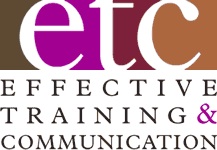Several site visitors sent in questions recently about how to practice their presentations. I responded to them individually, but thought an overall summary of my comments would be of interest to all of you.
So, let’s assume you’ve planned and organized a world-class audience-centric presentation, created effective speaker support slides and a useful handout. And you’re even ahead of the time line, since the presentation to senior management isn’t for three days.
Well, all that preparation will be for naught unless you deliver the presentation with credibility, competence and confidence. The more and better you practice it, the better your results will be, because Smart Practicing does matter. And remember that practice doesn’t make perfect, it only makes permanent. Only perfect practice makes perfect.
How much should you practice?
- How comfortable are you with presenting in general and with the specific content in particular? The more comfortable, the less practice time is necessary to achieve your intended outcomes.
- How important is the presentation to you and the organization you represent? Said another way, what’s the cost of failing or missing the mark? The more important the presentation, the easier it should be to justify adequate practice time.
- Learn it, don’t memorize it – there’s a big difference. Memorizing your presentation will take way too long and if you forget something, you can choke and lose credibility and confidence.
How you practice is often more important than how much:
- Practicing out loud, standing up, working with the slides is the most productive method. Pretend you’re talking to the audience.
- Gaining feedback from colleagues can be very helpful … if they know how to give constructive, specific ‘Plus/Delta’ feedback. ‘Plus’ comments indicate what’s working well that you should continue. ‘Delta’ comments indicate changes that would improve it. Usually the changes involve doing more of something that’s working or less of something that isn’t.
- Audiotaping or videotaping for self or group critique also can add value. You’ll be able to evaluate the message and delivery from the audience’s perspective.
- Several complete run-thrus right before ‘ShowTime’ should reinforce the content in your short-term memory. Remember that the audience only knows what they see and hear, not what you should have said.
- Make sure you practice for time. While you can’t control when you start, you can control when you stop. Allow enough time for the anticipated questions as well. If you have 30 minutes on the agenda, aim for 25 in your practicing to allow for the unexpected. No one will mind if you end five minutes early. Everyone will mind if you end five minutes late.
Effective speaker notes are a must:
- Appropriate speaker notes will help you practice and deliver. That’s where the PowerPoint screen print with notes option can be useful.
- Bigger is Better and Less is More. The fewer the words and the larger the type make them easier to read in a quick glance from the table, podium or held in your hand.
- And remember the downside of using 3 x 5 note cards – way too small to hold much and they can restrict both eye contact and gesturing.
Practicing your presentation effectively involves a lot more time and effort than merely looking at your outline or slides a few times before you take the platform. Remember that only Perfect Practice makes Perfect. That is how you get to the Presenters Hall of Fame.

